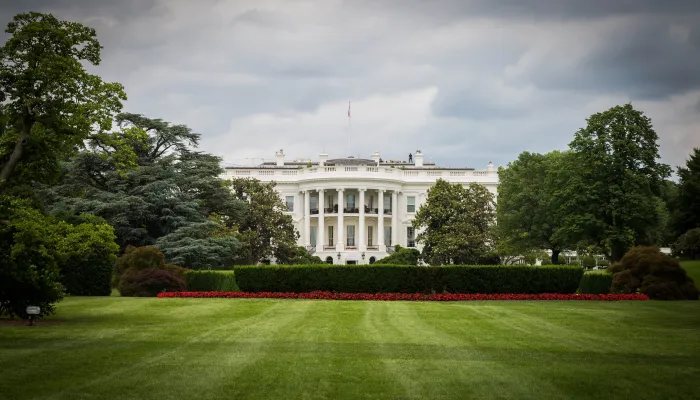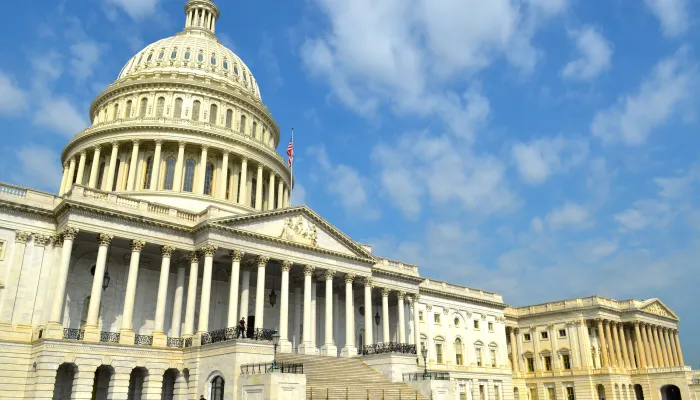“Current Policy Baseline” Gimmick Could Explode the Debt
As the House and Senate work to land on a concurrent budget resolution, Congress may consider trying to measure their reconciliation bills relative to a “current policy baseline” in order to mask the debt impact of deficit-financed tax cuts. Assuming this is allowed under budget rules, this would represent a massive budget gimmick that would justify and allow trillions of dollars of new borrowing.
A current policy baseline assumes that all policies in place in the current year will continue regardless of scheduled expirations or phase-outs. Advocates argue that a current policy baseline better reflects reality, enables permanent policy that would maximize growth, doesn’t impede Congress’s ability to cut spending, and would remove a bias in favor of spending cuts. These claims are highly problematic.
In this piece, we explain that adopting a current policy baseline would:
- Allow an extra $3.4 to $4.6 trillion of deficit increases through Fiscal Year (FY) 2034.
- Not reflect reality and instead reflect an unsustainable debt outlook that cannot continue.
- Undermine the economic gains of tax reform, which would be strongest from permanent and fully offset tax reform rather than trillions of dollars of growth-inhibiting debt.
- Reduce the incentive to cut spending by making extensions seem costless and removing the need for pay-fors.
- Create a bias toward deficit-financed tax cuts rather than removing a bias toward spending increases.
- Set a dangerous and costly precedent that could be used to justify tens of trillions of dollars in future borrowing.
A Current Policy Baseline Would Justify Trillions of Borrowing
Under current reconciliation rules, policymakers must specify any near-term borrowing they want to undertake in their budget resolution and are not allowed to add to long-term deficits (beyond the budget window) under the Byrd Rule.
Importantly, it’s not clear that adoption of a “current policy baseline” will be allowed under current Senate rules. But those who advocate for a current policy baseline are trying to both hide the borrowing in the budget window and allow additional borrowing beyond it.
Extending all individual and estate tax provisions of the Tax Cuts and Jobs Act (TCJA), which are set to expire at the end of 2025, would add $3.4 trillion to the deficit over nine years through FY 2034. Extending the current 40 percent bonus depreciation and avoiding scheduled changes to international tax rules would reduce revenue by an additional $300 billion.
Some policymakers want to go even further, counting an additional $900 billion of policies as current policy, including enhanced Affordable Care Act (ACA) subsidies they don’t intend to extend and effectively adopting a “past policy” baseline by assuming corporate parameters that haven’t all been in effect since 2021.1
Adopting a current policy baseline would therefore allow lawmakers to hide $3.4 trillion to $4.6 trillion of borrowing through FY 2034 and to increase the 2035 deficit by $500 billion (about 1.2 percent of GDP) or more, when the Byrd Rule would otherwise prohibit this.
A Current Policy Baseline Reflects an Unsustainable Reality
A common excuse for using a current policy baseline – which assumes that all temporary policies are actually permanent – is that it better reflects the “reality” of what will happen. However, this argument is nihilistic, ahistorical, and inaccurate.
Assuming anything that is likely to happen will happen effectively assumes Congress has little autonomy or decision-making power and establishes a type of circular logic where any policy that lawmakers want to enact is assumed to be costless because it already reflects “reality.”
Nor does this assumption match historic experience – policies are often extended but also frequently expire or change. A few examples include the expanded Child Tax Credit in the 2021 American Rescue Plan, the increase in the Social Security retirement age scheduled under the 1983 reforms, and several business provisions from the TCJA itself, which have been allowed to phase out or occur starting in 2022.
Rather than reflecting a guaranteed “reality,” current policy reflects an unsustainable one, where debt would rise from around 100 percent of Gross Domestic Product (GDP) today to a record 130 percent by FY 2034, with interest costs reaching a massive one-quarter of revenue. Beyond that, debt growth would accelerate as higher debt pushes up interest rates, leading to even higher debt. This debt spiral would be unsustainable and could not continue forever without some crisis or correction.

Permanent Pro-Growth Reform Best Comes from Fiscal Responsibility
Budget reconciliation prohibits long-term deficit increases under the Byrd Rule, meaning an extension of the TCJA that is not offset would have to expire within the next decade. Proponents of using a current policy baseline argue that, by hiding the long-term deficit increase, it would allow lawmakers to permanently enshrine the TCJA into law, thus making the extension more pro-growth.
Permanent tax policy is indeed more pro-growth than temporary policy, as it better promotes investment and long-term decision-making. But it is unclear that Senate rules allow the use of a current policy baseline for enforcing the Byrd Rule. And even if they do, the long-term economic benefits of permanency would likely be more than countered by the long-term economic costs of higher debt.2
Rather than gambling on a process gimmick that will ultimately undermine economic growth, policymakers should make the TCJA permanent by ensuring it does not add to the long-term debt. This could be done through a combination of reforms and adjustments to the TCJA itself and through spending and revenue offsets to cover additional long-term borrowing.
A permanent, thoughtful, and fiscally responsible tax extension and spending cut package would unquestionably be Byrd Rule compliant and would do far more to grow the economy than using the current policy gimmick, as it would remove the economic burden of additional debt and add the benefits from cutting certain distorting tax breaks and spending provisions.
Current Policy Baseline Excuses Lawmakers from Adopting Spending Cuts
Some argue that using a current policy baseline does nothing to prevent lawmakers from reducing deficits via spending cuts. While it is true that this gimmick wouldn’t prevent spending cuts, it would make spending cuts much less likely to occur because offsets would no longer be necessary to prevent increases in the debt.
The debate over the House budget resolution makes this point clear, as fiscal hawks – as a compromise – demanded at least $2 trillion of spending cuts to partially offset $4.8 trillion of tax cuts and spending, and also insisted the level of spending cuts be linked to the level of tax cuts.
In order to comply with the Byrd Rule and the rhetoric promising debt reduction, this requirement would have to be strengthened – requiring even more spending cuts. Yet, under a current policy baseline, tax cuts would appear costless and the incentive to offset them would therefore shrink or disappear.
A Current Policy Baseline Would Create a Tax Cut Bias, Not Remove a Spending Bias
One common argument for using a current policy baseline is that the Congressional Budget Office’s (CBO) current law baseline has a bias toward higher spending since certain spending programs are authorized temporarily but assumed permanent. This claim is largely a red herring; in fact, establishing a current policy baseline today would clearly create the opposite bias.
As we’ve explained before, there are some spending programs and tax revenues that are considered permanent in CBO’s baseline even though they have or are set to legally expire. However, these programs are treated differently on the front end – changes to policy that would increase spending or decrease revenue are accounted for permanently even if an authorization is only temporarily. For example, Supplemental Nutritional Assistance Program (SNAP) benefit increases that are only in effect for five years are scored as if they are in effect for ten years – and so logically these extensions that are scored once are not then scored a second time with additional costs.
TCJA, on the other hand, was not originally treated as permanent and was instead intentionally designed with temporary provisions in order to lower its score to comply with the FY 2018 reconciliation instructions and Byrd Rule. To switch the treatment now, after the fact, would create a massive bias toward tax cuts by allowing $3.4 to $4.2 trillion of tax cuts to avoid being recognized on either the front or the back end.
A Current Policy Baseline Would Create a Dangerous and Costly Precedent
Were lawmakers to adopt a current policy baseline for reconciliation today, it would open the door to tens of trillions of dollars of additional unrecognized borrowing in the future. Future lawmakers could simply pass a one-year policy of their choosing and then make it permanent “for free.”
In an extreme case, a future Congress and Administration could implement a Medicare for All plan at the single-year cost of less than $3 trillion and then make the Medicare for All plan permanent while treating the additional $30 trillion of nine-year costs as if they are costless.
With a current policy baseline, all efforts at responsible budgeting could break down, putting the debt on a rapidly rising path without ever forcing policymakers to take responsibility for this trajectory.
***
The expiration of several provisions in the TCJA creates a moment for lawmakers to reflect on the fiscal situation and their priorities. As our Build Your Own Tax Extensions tool and Budget Offsets Bank show, there are numerous options for reforming and extending the TCJA in fiscally responsible ways that recognize trade-offs, support strong economic growth, and reduce long-term deficits.
A current policy baseline would hide those tradeoffs and open the door to massive new borrowing at a time that debt is already too high and growing too quickly. It would represent a massive budget gimmick and impose huge costs on future generations.
1 Under the TCJA, businesses have been required to amortize (rather than fully expense) their research expenses, and their interest expense deduction has been limited to 30 percent of earnings before interest and taxes (EBIT) since 2022. Bonus depreciation (full expensing) for equipment has also been phasing down – applying to 80 percent of costs in 2023, 60 percent in 2024, and 40 percent in 2025. Some have argued for assuming 2021 policy for these provisions, with full expensing of research costs, interest deductibility limited to 30 percent of earnings before interest, taxes, depreciation, and amortization (EBITDA), and 100 percent bonus depreciation.
2 Estimators that have analyzed the long-term deficit impact of TCJA extension – including the Congressional Budget Office, Tax Policy Center, Penn Wharton Budget Model, and Yale Budget Lab – have found that it would slow longer-term economic growth, leading to less or even negative output gains compared to the short term. Importantly, the part of TCJA which is most important to make permanent from a growth perspective – the corporate rate cut – was made permanent in the initial law and is not scheduled to expire.


